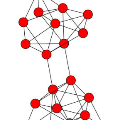Representation learning on graphs has emerged as a powerful mechanism to automate feature vector generation for downstream machine learning tasks. The advances in representation on graphs have centered on both homogeneous and heterogeneous graphs, where the latter presenting the challenges associated with multi-typed nodes and/or edges. In this paper, we consider the additional challenge of evolving graphs. We ask the question of whether the advances in representation learning for static graphs can be leveraged for dynamic graphs and how? It is important to be able to incorporate those advances to maximize the utility and generalization of methods. To that end, we propose the Framework for Incremental Learning of Dynamic Networks Embedding (FILDNE), which can utilize any existing static representation learning method for learning node embeddings, while keeping the computational costs low. FILDNE integrates the feature vectors computed using the standard methods over different timesteps into a single representation by developing a convex combination function and alignment mechanism. Experimental results on several downstream tasks, over seven real-world data sets, show that FILDNE is able to reduce memory and computational time costs while providing competitive quality measure gains with respect to the contemporary methods for representation learning on dynamic graphs.
翻译:图表上的代表学习已成为一种强大的机制,可以自动生成用于下游机器学习任务的矢量生成特性。图表上的代表学习进展集中在同质和异质图形上,后者提出了与多类型节点和/或边缘相关的挑战。在本文中,我们考虑了不断变化的图表带来的额外挑战。我们问的是,静态图表的代表学习进展能否用于动态图表以及如何?必须能够将这些进展纳入其中,以最大限度地发挥方法的效用和概括性。为此,我们提议了动态网络嵌入的增量学习框架(FIDNE),该框架可以使用任何现有的静态代表学习方法学习节点嵌入,同时保持计算成本的低。FIDNE通过开发一个矩形组合功能和校正机制,将使用不同时间段的标准方法计算出来的特性矢量纳入单一代表中。若干下游任务(超过7套真实世界数据集)的实验结果显示,FLDNE能够减少记忆和计算时间成本,同时提供竞争性的质量衡量方法,以动态代表方式学习当代方法。



